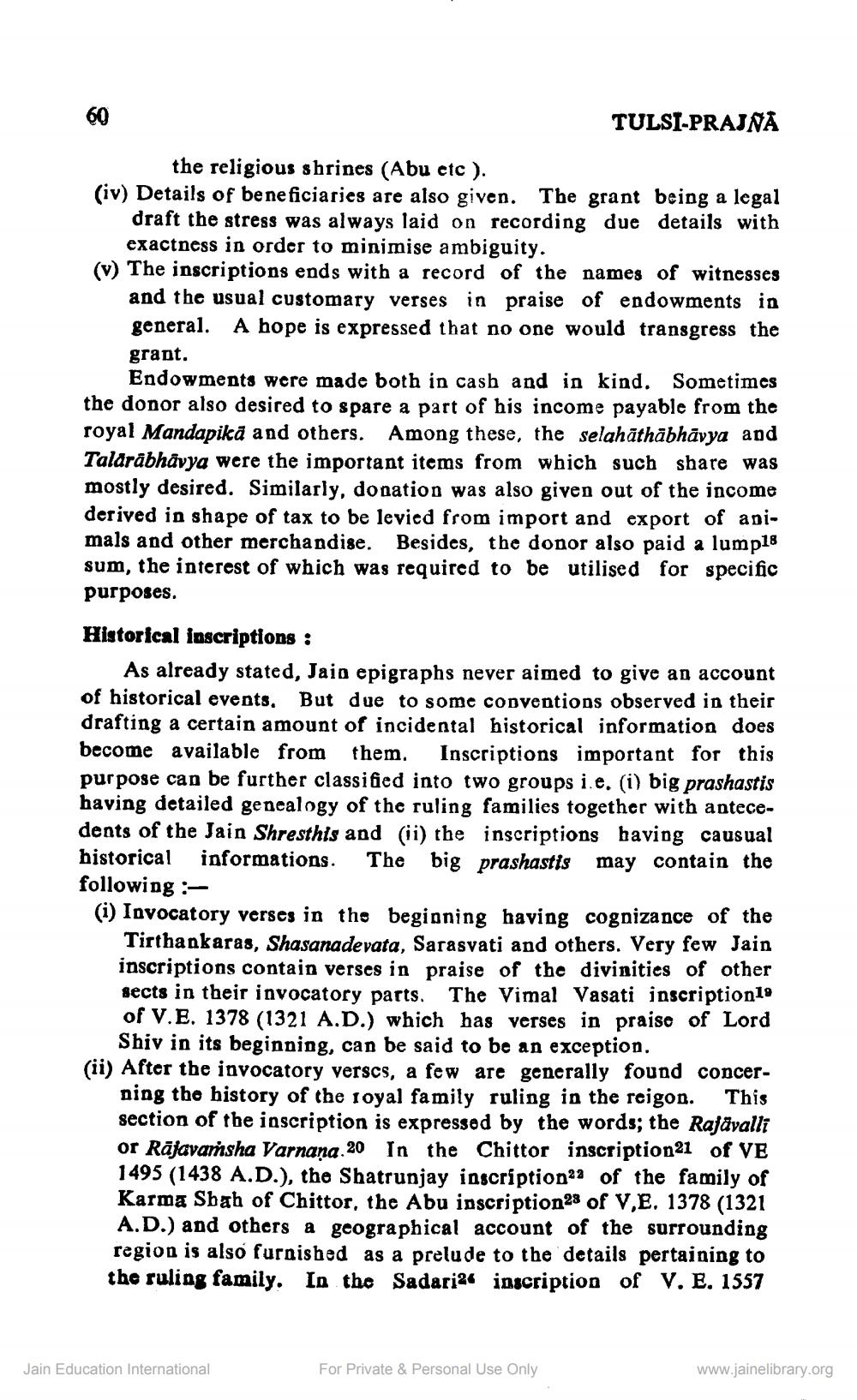________________
TULSI-PRAJNA
the religious shrines (Abu etc ). (iv) Details of beneficiaries are also given. The grant being a legal
draft the stress was always laid on recording due details with
exactness in order to minimise ambiguity. (v) The inscriptions ends with a record of the names of witnesses
and the usual customary verses in praise of endowments in general. A hope is expressed that no one would transgress the grant.
Endowments were made both in cash and in kind. Sometimes the donor also desired to spare a part of his income payable from the royal Mandapikā and others. Among these, the selahāthābhāvya and Talarābhavya were the important items from which such share was mostly desired. Similarly, donation was also given out of the income derived in shape of tax to be levied from import and export of apimals and other merchandise. Besides, the donor also paid a lump18 sum, the interest of which was required to be utilised for specific purposes.
Historical inscriptions :
As already stated, Jaio epigraphs never aimed to give an account of historical events. But due to some conventions observed in their drafting a certain amount of incidental historical information does become available from them. Inscriptions important for this purpose can be further classified into two groups i.e. (i) big prashastis having detailed genealogy of the ruling families together with antecedents of the Jain Shresthis and (ii) the inscriptions having causual historical informations. The big prashastis may contain the following: (i) Invocatory verses in the beginning having cognizance of the
Tirthankaras, Shasanadevata, Sarasvati and others. Very few Jain inscriptions contain verses in praise of the divinities of other sects in their invocatory parts. The Vimal Vasati inscription19 of V.8. 1378 (1321 A.D.) which has verses in praise of Lord
Shiv in its beginning, can be said to be an exception. (ii) After the invocatory verscs, a few are generally found concer
ning the history of the royal family ruling in the reigon. This section of the inscription is expressed by the words; the Rajāvalli or Rājavarsha Varnana.20 In the Chittor inscription21 of VB 1495 (1438 A.D.), the Shatrunjay inscription2a of the family of Karma Shah of Chittor, the Abu inscription 28 of vie. 1378 (1321 A.D.) and others a geographical account of the surrounding region is also furnished as a prelude to the details pertaining to the ruling family. In the Sadari24 inscription of V. E. 1557
Jain Education International
For Private & Personal Use Only
www.jainelibrary.org




